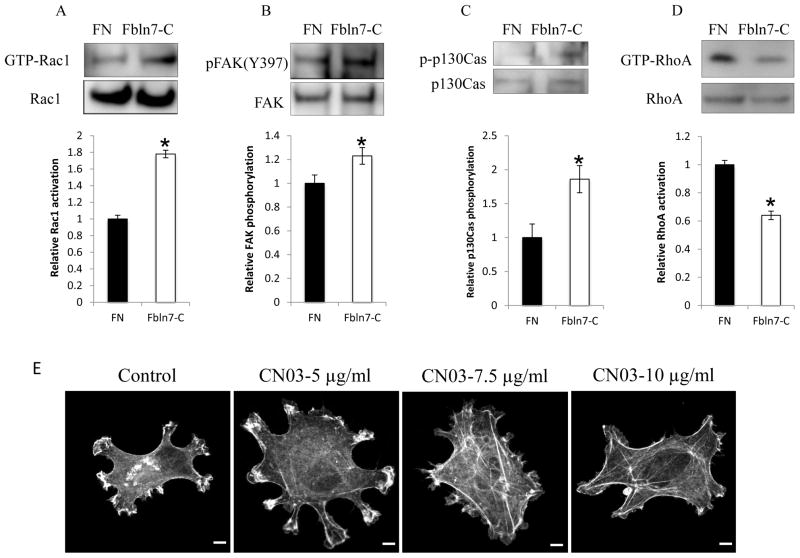Fig. 3.
Sustained activation of Rac1 GTPase (A), increased phosphorylation of FAK (B) and p130Cas (C), and deficient activation of RhoA GTPase (D) upon attachment to Fbln7-C (20 μg/ml). Data represent mean ± s.e. (n = 3); *p < 0.05. (E) Treatment with the RhoA activator (CN03) rescued the phenotype of HUVECs on the Fbln7-C substrate. CN03 treatment induced the formation of stress fibers in a dose-dependent manner, as was shown by phalloidin staining. Scale bar = 0.25 μm for control, 5-μg/ml CN03, and 7.5-μg/ml CN03. 0.5 μm for 10-μg/ml CN03.

